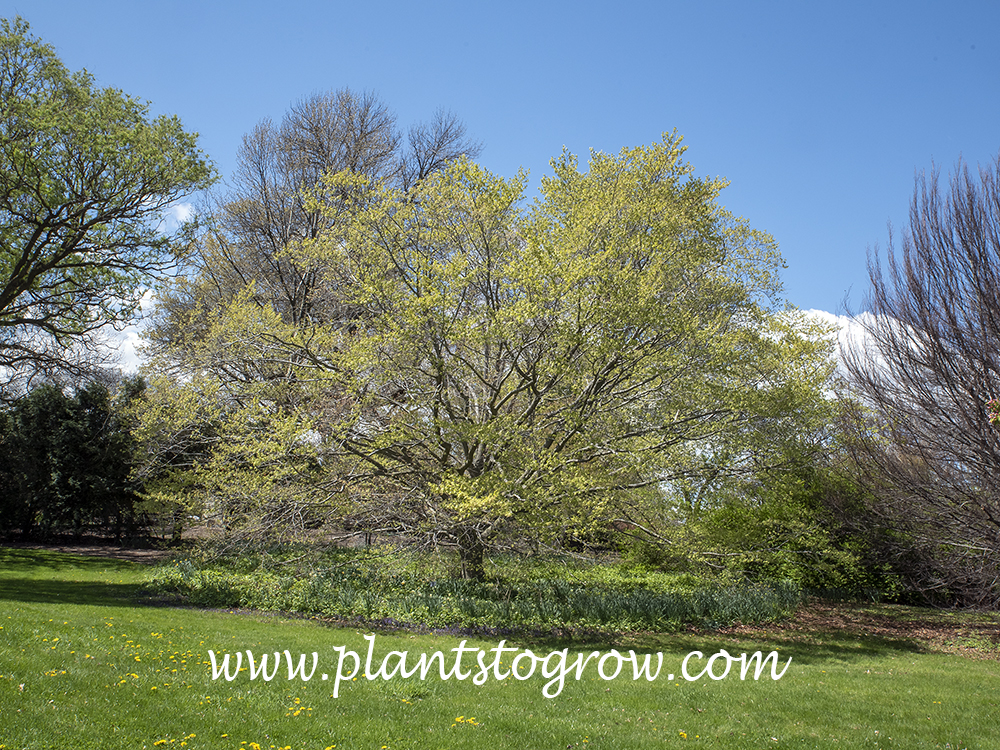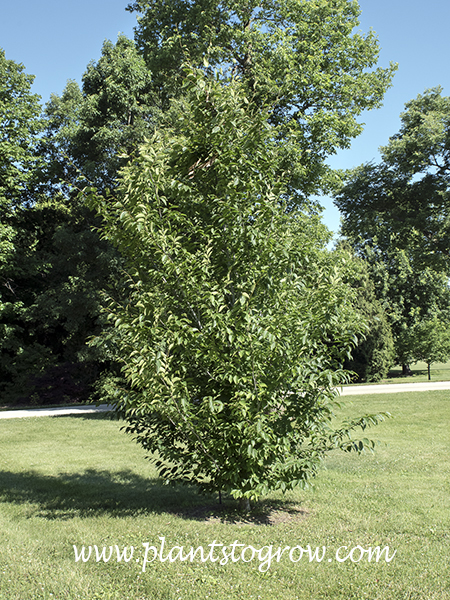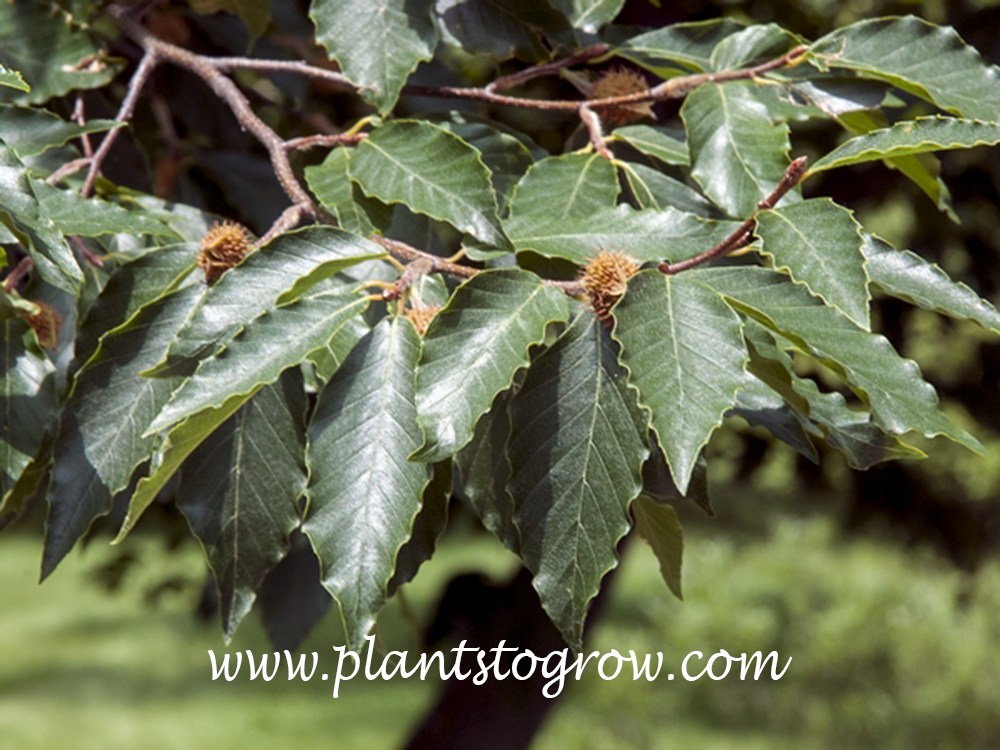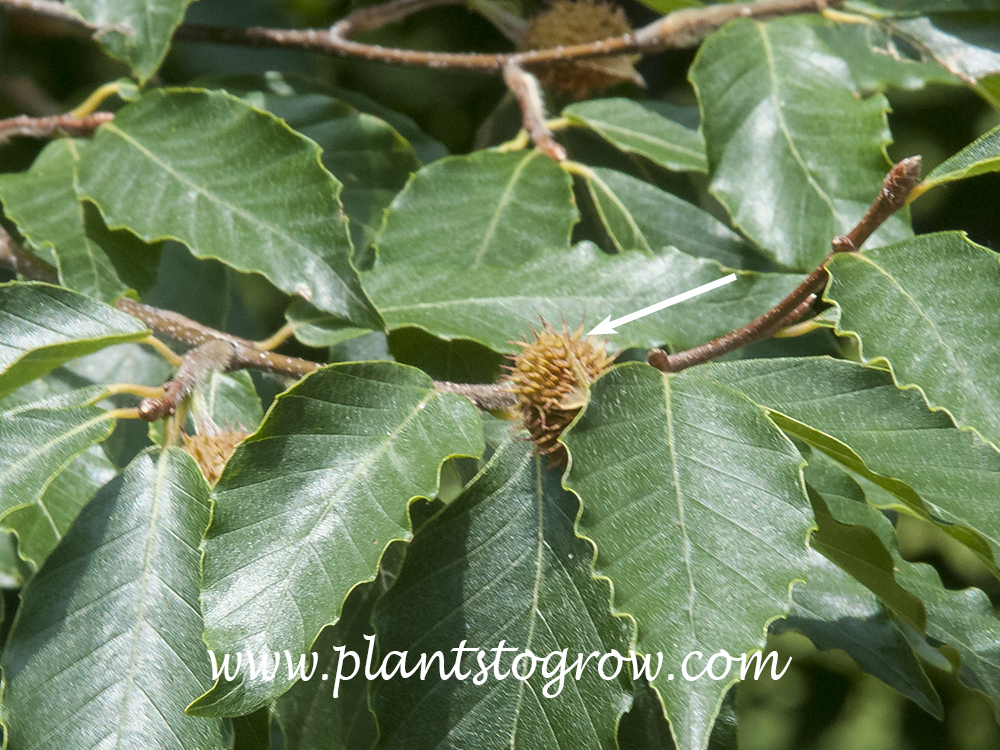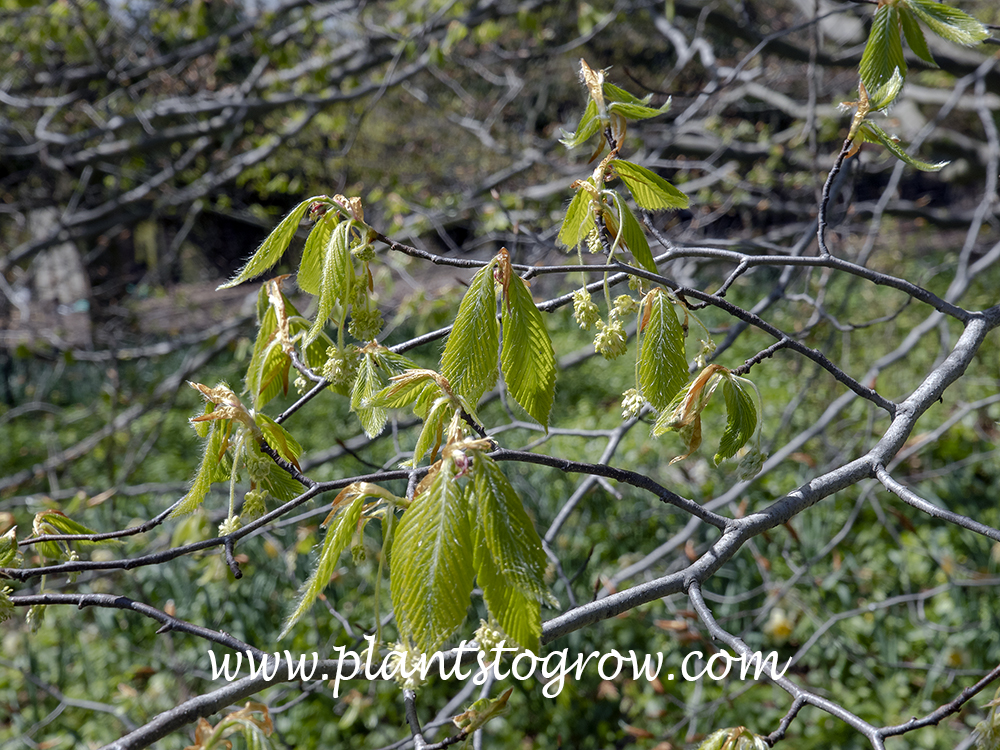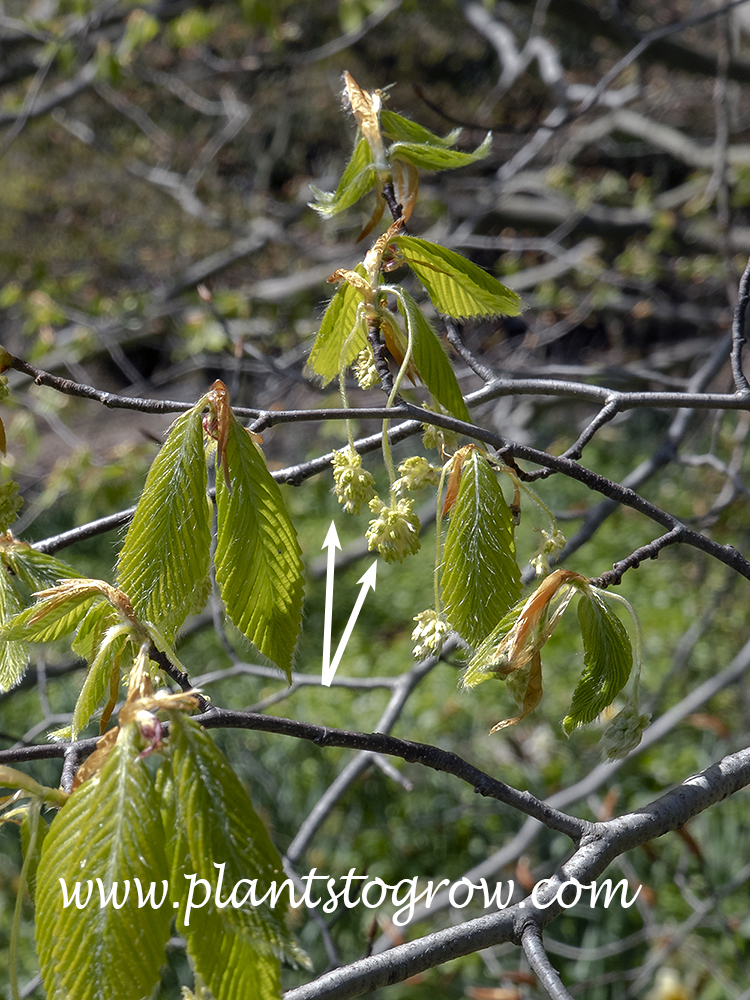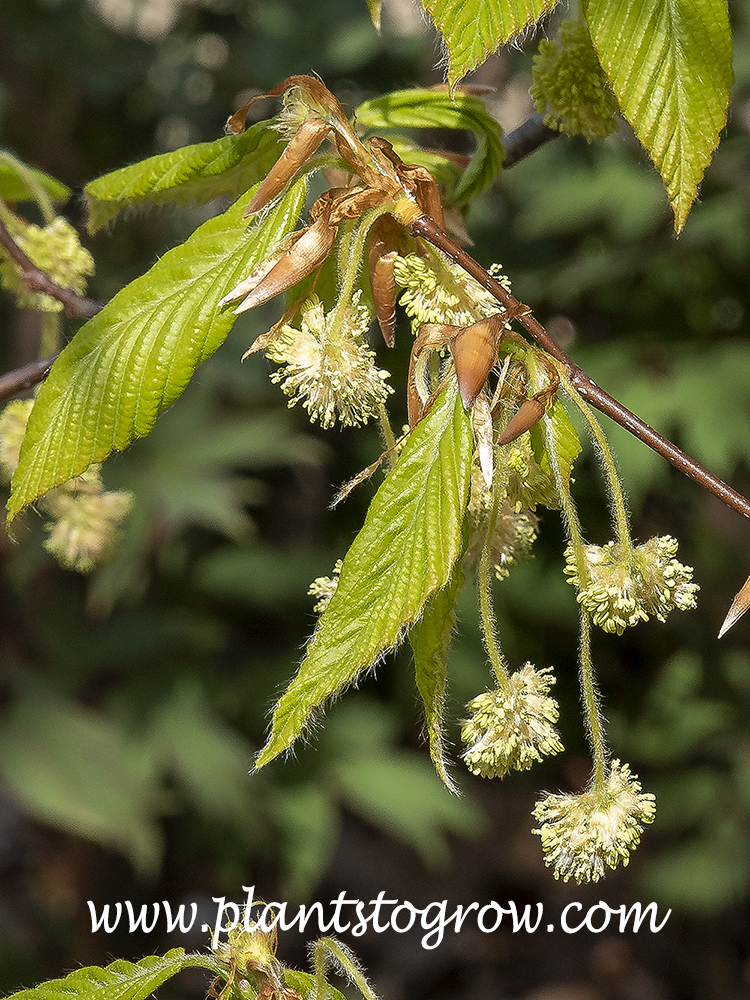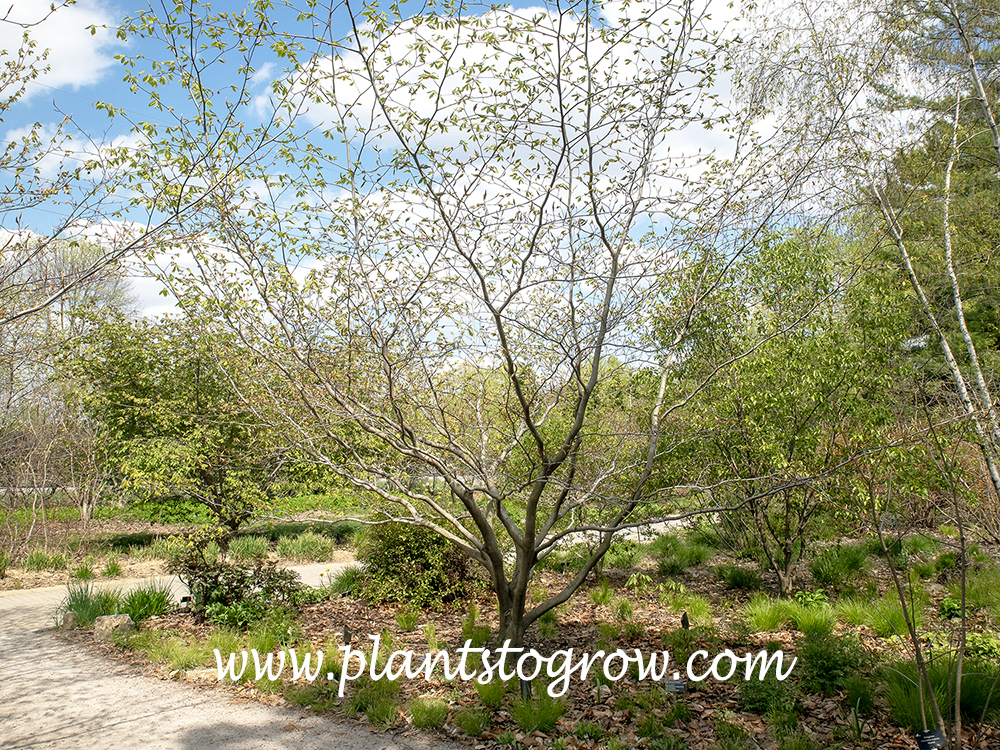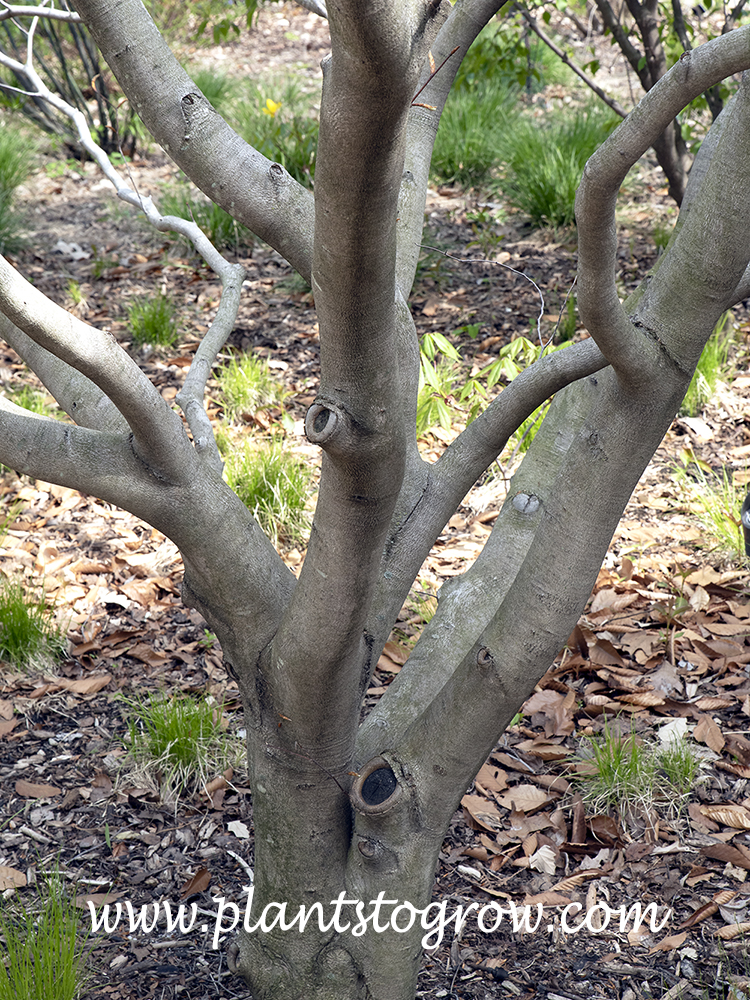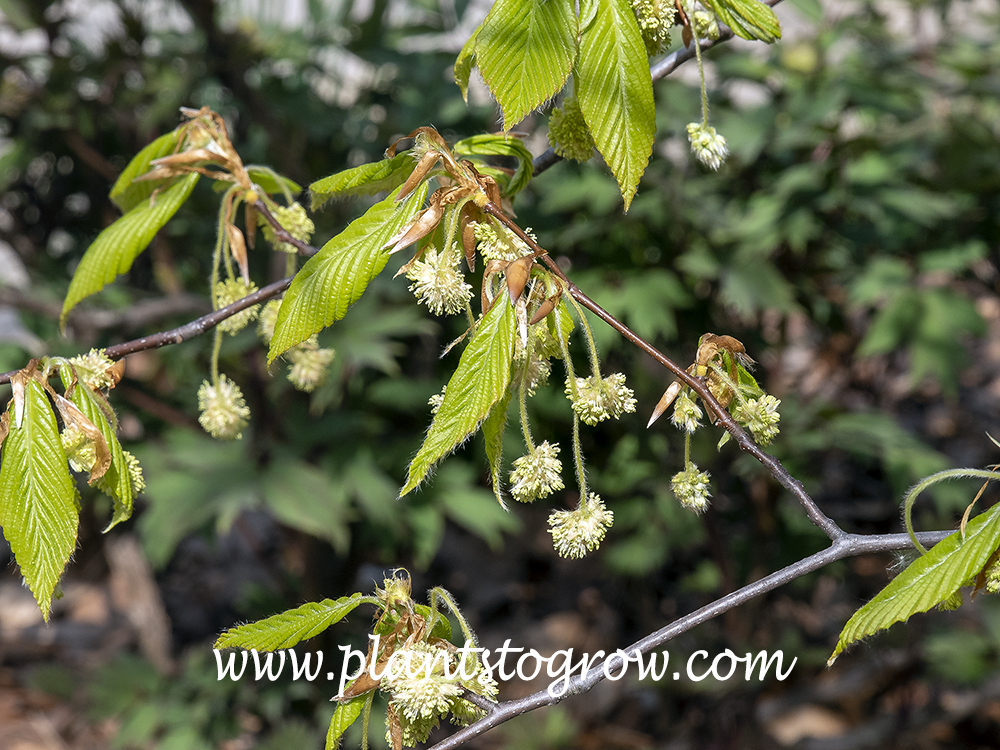| Description | American Beech (Fagus grandifolia) is a large shade tree that produces edible nuts. |
|---|---|
| Pronunciation | (FAG-us) (gran-dih-FOH-lee-uh) |
| Plant Type | Trees Deciduous, Site author's observations |
| Hardiness Zone | 4-9 |
| Sunlight | full, tolerates some shade |
| Moisture | average to moist, avoid wet areas and compact soil |
| Soil & Site | prefers well drained, average to humusy |
| Flowers | inconspicuous, monoecious, male and female flowers separate on the same tree, male flower in pendulous globular heads, female flowers borne on short spikes |
| Fruit | edible triangular nut enclosed in a spiky 4-lobes involucre, contains 2 nuts |
| Leaves | simple and alternate, emerge shiny, changing to dark green, wavy, rounded serrations, golden yellow/bronze fall color, acuminate shaped leaves |
| Stems | bark is gray and smooth |
| Roots | may produce root suckers |
| Dimensions | 50-70 or up to 100, spread is egual to or less than the height |
| Maintenance | prune in summer |
| Propagation | seeds require cold stratification |
| Misc Facts | "Fagus [genus name] is derived from Greek phegos (beech) or phago- (eating) component, and is the Latin name for 'beech tree'. Sylvatica means 'wild, of or from woods or forests". (#145) |
| Author's Notes | These are some of the largest deciduous trees I have seen growing in Wisconsin (USA). Wide trunks with smooth gray bark. Wide oval form. At the Boerner Botanical Gardens in Hales Corners, Wisconsin (USA), there is a very large wide specimen. It was a smaller tree rescued from a highway project. |
| Notes & Reference | #01-Manual of Woody Landscape Plants (Michael Dirr, #93-North American Landscape Trees (Arthur Lee Jacobson), #145-Plant Lives (Sue Eland) www.plantlives.com |

Cart
